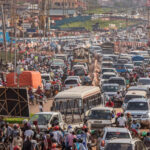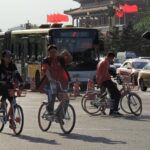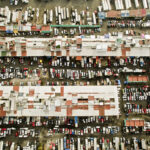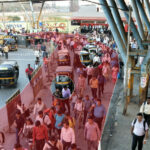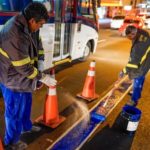Posts in the 'Integrated Transport' category
Climate change is the defining challenge of our time, and clean energy and green transport are the keys to addressing it. Less than two decades ago, energy emissions seemed to be spiraling out of control as countries were locked into ...

This blog is also available in Spanish on IADB.org. For most Latin American and Caribbean cities, public transport is the single most important way to access opportunity and essential services for most urban dwellers, from finding a job to education ...

As sales move increasingly online, e-commerce has boomed globally. Shipping goods has become more complex, as more items must be individually delivered to consumers’ homes, compared with bulk delivery to a store. In New York City, for example, the average ...

Bike infrastructure in Latin American cities has been growing fast over the last decade. Cities like Bogotá and Santiago have more than doubled the size of their cycling networks. This is good news, as studies have shown that cities that ...

City dwellers worldwide are shifting lifestyles as a result of the COVID-19 pandemic, especially in terms of transport. As cities begin to re-open, urban planners and designers are rethinking urban and transport infrastructure to adapt to a post-pandemic world. When ...

Cities are redefining their relationship with transport and it’s some of the smallest vehicles that are leading the way. Shared bike services, e-bikes, scooters and mopeds, together known as micromobility, are proliferating in the urban landscape. Recent changes in mobility ...

Left unchecked, urban freight will continue to be a major driver of the global climate crisis.

This is part one of our series on urban freight and achieving a “triple zero” bottom-line: zero emissions, zero road deaths and zero exclusion from core services and opportunities. A line of trucks files patiently into the Port of Shenzhen. ...

Mumbai’s suburban rail system is the world’s busiest, serving 7.5 million riders a day. This photo story is an attempt at documenting moments of precarious travel in Mumbai city, as part of a larger investigation focused on infrastructure design that ...

Cities in Africa are in something of a quandary when it comes to COVID-19. To date, the impact of the disease has been much less than most experts predicted. As of this writing, the continent has had over 890,000 confirmed ...

They marched for human rights, for health care and education, but they came for the metro system, burning and damaging more than 86 stations across the city. Massive protests in Santiago last October forced the government to agree to rewrite ...

As some countries creak open in the wake of COVID-19, businesses and workers rightly fear the rough road ahead. Over the past 10 weeks, 40 million U.S. workers have lost their jobs. Researchers at the University of Chicago estimate that ...

There’s no question we’re going through unprecedented times for public transport. Ridership is down anywhere from 60% to 90%. Transit agencies are hemorrhaging cash, with fare revenue following ridership down the tube. But the fact is that throughout the tremendous ...

The ongoing pandemic has wreaked immense and lasting damage to India’s economy, and passenger transport has been particularly affected. COVID-19’s far-reaching impact on the aviation and railway industry is well-documented, along with the struggles of auto and taxi drivers. However, a critical mode that has ...

COVID-19 is a radical moment in so many ways. By disrupting urban systems so profoundly, it has thrust the question of urban futures before us in a way that we cannot ignore. Will cities recover? What will they look like? ...

Page 4 of 135« First...345...1020...Last »






